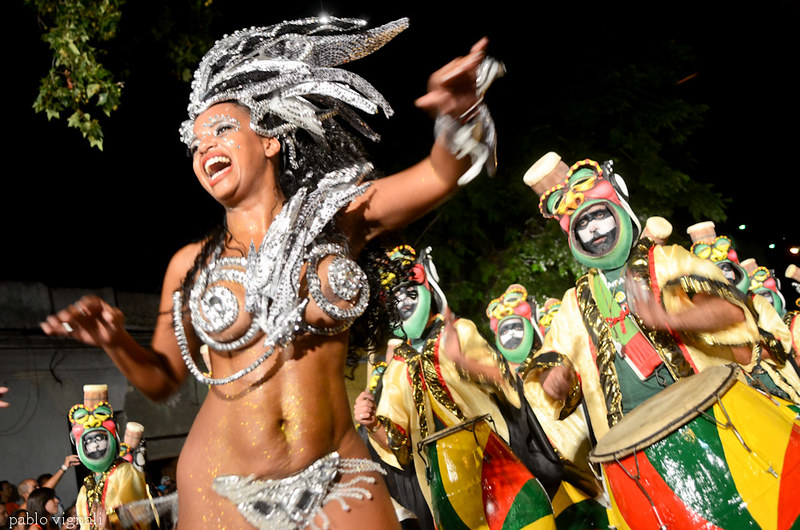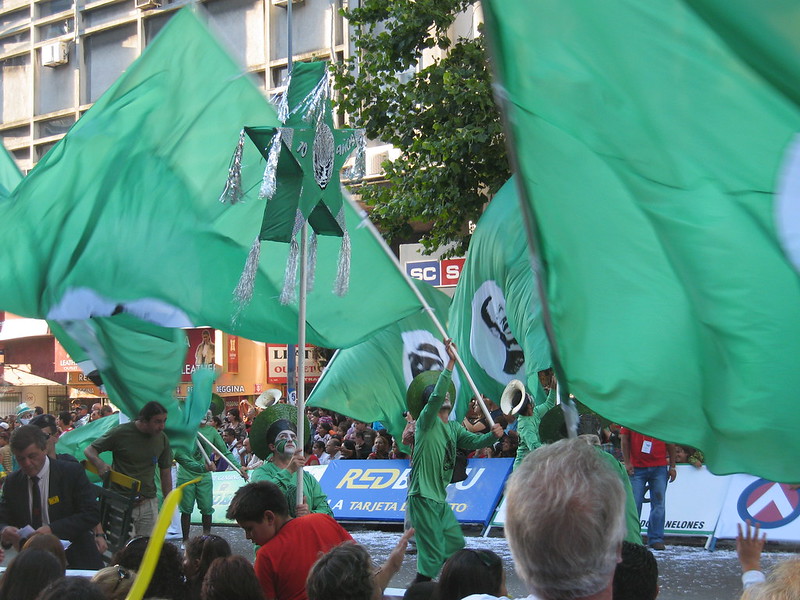Montevideo Carnival (Desfile de las Llamadas)
A Night Resonating with Drums, Color, and Afro-Uruguayan Pride
2026/02/04 - 2026/02/25
Every summer, Montevideo explodes with the rhythm of candombe drums and sparkling costumes. Especially during the two nights of the “Desfile de las Llamadas” (Parade of the Calls), the historic neighborhoods of Barrio Sur and Palermo become a giant open-air stage, overflowing with thousands of drummers, dancers, and spectators. The music vibrates in your bones, and the energy of a culture celebrated with every movement makes this festival Uruguay’s most unmissable event—you truly have to feel it to understand it.
The Montevideo Carnival, with its highlight Desfile de las Llamadas, is held every February. Locals, travelers from around the world, and candombe lovers gather, making it the most colorful and inclusive festival for music fans, photographers, and street dance enthusiasts alike.
Main Attractions
Desfile de las Llamadas (Parade of the Calls)
The centerpiece of the festival is the Desfile de las Llamadas. More than 40 comparsas (candombe groups) parade through the night streets, led by the thunder of hundreds of drums. Dancers in feathered and sequined costumes or colonial-era dress stomp powerfully on the cobblestones—their performance is a breathtaking homage to Afro-Uruguayan culture, and their pride is contagious to everyone watching.
Key Events
The carnival lasts for over 40 days, featuring the official parade (Desfile Inaugural), music and theater competitions (Concurso de Agrupaciones), and open-air stages (tablados) throughout the city. But the Llamadas in early February are the peak: streets are packed, and the party continues until dawn. Vendors line the route selling confetti, masks, and neon lights, adding to the festive chaos.
Costumes and Decorations
Performers wear sequined and feathered dresses, colonial-style suits, and silk hats—fusing African and European influences. Each comparsa features symbolic characters like Mama Vieja (the Old Lady), Gramillero (the Herbalist), and Escobero (the Broom Man). Streets are decorated with banners and colorful lights, and the air is filled with the scent of incense and grilled meat.
Traditional Food & Drink
Carnival favorites include chorizo sandwiches, grilled meats, tortas fritas (fried pastries), and alfajores (sweets). The smoky aroma of asado mixes with sweet peanuts and beer, while fruit juices and icy clericó (fruit punch) are popular at the stalls lining the parade. Dancers and spectators alike keep their energy up all night long.
Cultural and Historical Background
The roots of Montevideo Carnival go back to the late 18th century, during Spanish colonial times in Uruguay. Africans brought as slaves preserved their traditional rhythms, dances, and songs during weekends and religious celebrations, maintaining community bonds and identity. Barrio Sur and Palermo became centers for Afro-Uruguayan life, with candombe (African-derived drum music) at the heart of the local culture.
The name "Llamadas" (Calls) comes from the Afro-Uruguayan custom of calling friends together with drums, a tradition that continued even after emancipation. In the late 19th century, candombe rhythms and parades were officially recognized as part of the carnival, blending with the masquerades, theater, and music of European immigrants. Over time, African, European, and Indigenous traditions merged, and the festival became a celebration of resistance, pride, freedom, and diversity.
Today, Montevideo Carnival is known as the world’s longest, lasting over 40 days, with more than 200,000 people attending the Llamadas each year. Candombe is now a national symbol of Uruguayan identity and was inscribed as UNESCO Intangible Cultural Heritage in 2009. The carnival is a special time to honor ancestors, celebrate diversity, and strengthen community bonds through music and dance.
Participant Voices
I came from Spain just for this carnival. Before I knew it, I was dancing with a comparsa until 3 a.m., covered in confetti and sweat. A drummer friend explained the history of candombe to me, and I realized this is more than a parade—it's a living story.
Fun Facts
- Montevideo Carnival is the longest in the world (over 40 days).
- The parade route winds about 1.5 km through Barrio Sur and Palermo.
- Iconic characters like Mama Vieja, Gramillero, and Escobero have roots in Afro-Uruguayan folklore.
Festival Dates
The Desfile de las Llamadas is held every February in Montevideo’s Barrio Sur and Palermo districts.
The event schedule is subject to change. Please check the official website for the most up-to-date information.
Information
| Name | Montevideo Carnival (Desfile de las Llamadas) |
| Country | Uruguay |
| Area | Montevideo, |
| Date | 2026/02/04 - 2026/02/25 |
| Link |
Upcoming Festivals
Dia de la Virgen de Guadalupe Mexico
A Festival Weaving Faith, Fervor, and Mexican Identity
2025/12/11L'Escalade Switzerland
Geneva’s Grand Winter Festival of Courage, Chocolate, and Community
2025/12/12Umkhosi Wokweshwama South Africa
The Zulu First Fruits Festival—A Sacred Celebration of Land, Ancestors, and Renewal
2025/12/12Lucia Festival (St. Lucia's Day) Sweden
A Festival of Light Illuminating the Nordic Darkness
2025/12/15Las Posadas Mexico
The Luminous Quest for Sacred Shelter
2025/12/22Noche de Rabanos (Night of the Radishes) Mexico
A celebration blending art, farming heritage, and cultural traditions
2025/12/23Chant of the Sybil on Majorca Spain
A Medieval Prophecy Echoes Through Majorcan Christmas
2025/12/23‘Hatajo de Negritos’ and the ‘Hatajo de Pallitas’ Peru
A Christmas Festival of Rhythm, Faith, and Afro-Andean Heritage in Peru’s Ica Region
2025/12/24Harbin International Ice and Snow Sculpture Festival China
A Frozen Wonderland Where Art and Adventure Merge
2025/12/24Takanakuy Peru
The Andean Festival of Reconciliation by Fist—How Confrontation Creates Year-End Peace and Bonds


